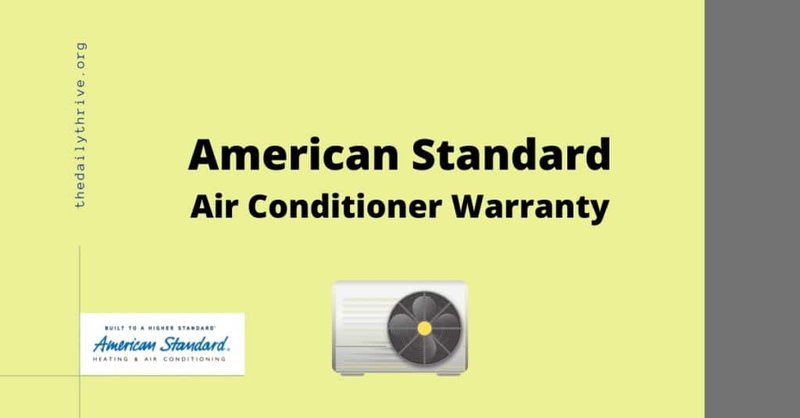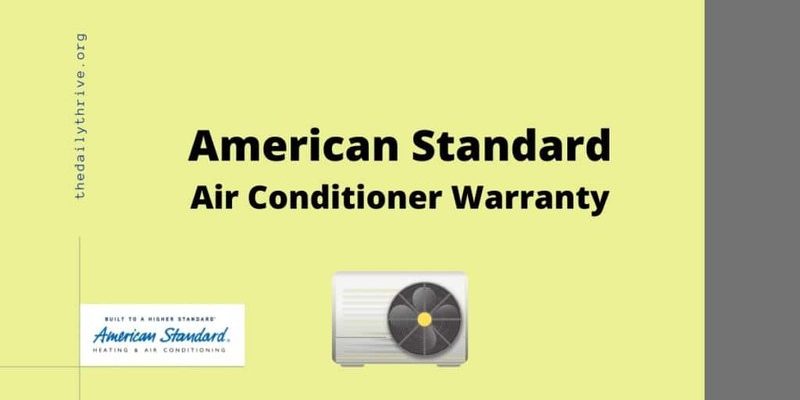
Honestly, it’s a common question. Finding the warranty details can be a bit like a treasure hunt—with a few twists and turns. Whether you’re trying to troubleshoot a glitch, planning maintenance, or just want to know how long your investment is covered, knowing where to look is key. Let me explain how to track down the warranty policy for your American Standard HVAC system, step-by-step, so you don’t have to pull your hair out or call customer service twice.
Understanding Why the Warranty Policy Matters
When you buy an HVAC system, the warranty is more than just a document—you can think of it as a promise from the manufacturer that your purchase is protected. But the details matter. The warranty explains what parts or labor are covered, how long the coverage lasts, and what conditions might void it. So knowing where to locate this information helps you avoid surprises if you ever need a repair or replacement.
American Standard is a reputable brand, known for quality heating and cooling equipment. But like any manufacturer, they offer different warranty terms depending on the model, installation type, and region. That means the warranty policy isn’t one-size-fits-all—it can vary quite a bit. You might be wondering why this complexity exists. Here’s the thing: HVAC warranties often depend on who installs the unit, whether you register the product, or if you follow recommended maintenance schedules.
Finding the warranty lets you check if your unit’s still covered, what kind of repairs you can expect to be free, and what your next steps should be if something breaks. Plus, knowing the warranty terms ahead of time can save you money and stress down the line.
Where To Look First: The Owner’s Manual and Paperwork
Right after you buy your American Standard HVAC system and have it installed, one of the first places you want to keep is the owner’s manual. Think of this booklet as the “instruction guide” that not only tells you how to use and maintain your system but usually contains warranty information tucked inside. It’s like finding a secret map in the back of the manual.
These manuals often include a dedicated section titled “Warranty” or “Limited Warranty.” Here you’ll find details about:
- The duration of the warranty (e.g., 5 or 10 years on certain parts)
- What is covered (compressor, heat exchanger, parts, labor, etc.)
- Any actions needed to keep the warranty valid, like regular maintenance
- Exclusions or things that void the warranty
If you don’t have the physical manual lying around, don’t sweat it. You can usually find a digital copy on the official American Standard website by searching your model number. This is especially useful if you lost the paperwork or bought the unit second-hand.
Checking Your Purchase Documentation and Installation Records
Okay, so having the manual handy is great, but sometimes the warranty policy is *not* just about what the manufacturer says. Here’s a little twist: American Standard warranties often hinge on professional installation. That means the installation company or HVAC dealer plays a role in your warranty coverage.
After the installation, you should have received a few key documents: an invoice, a receipt, and sometimes an installation checklist or certificate. These papers typically mention warranty registration or instructions on how to activate the warranty. Honestly, skipping the warranty registration is one of the biggest mistakes because many American Standard warranties only kick in fully *after* registration.
If you still have your installation records, check them for warranty codes, registration numbers, or contact info for the installer. Sometimes the installer will even give you a printed warranty pamphlet or email confirmation with warranty terms.
Using the American Standard Official Website to Access Warranty Information
Here’s where the digital age comes in handy. American Standard’s website is a solid place to go when hunting for warranty information. They have a dedicated section for warranty policies that covers:
- General warranty guidelines by product category (furnace, air conditioner, heat pump, etc.)
- Instructions to register your HVAC system online
- Downloadable warranty booklets and manuals in PDF form
- Contact details for warranty claims or questions
To find this info, you can start by navigating to the American Standard website footer or menu, usually under “Support” or “Customer Service.” Then look for “Warranty” or “Product Registration.”
Here’s a tip: when you enter your model and serial numbers (usually found on the indoor or outdoor unit’s data plate), the site can show you warranty details specific to your exact system. This removes any guesswork about coverage length or parts included.
Registering Your American Standard HVAC System: Why It’s Crucial
You might think, “Why bother registering? I already bought the system.” But registering your unit is like turning on the warranty’s “power switch.” Many American Standard warranties require registration within a certain timeframe (often 60 days) from installation. If you don’t register, your warranty might be limited or even null.
Registering usually involves:
- Filling out a form with your personal info
- Entering your unit’s model and serial number
- Providing installation details, like dealer or contractor name
This process is quick and mostly done online, but you can also register by phone or mail in some cases.
Here’s the best part: registering activates extended warranties on some parts, especially compressors or heat exchangers, which can provide coverage beyond the standard limited warranty. So it’s more than just a formality—it’s your insurance policy guard.
What To Do If You Can’t Find Your Warranty Policy
If you’re scratching your head because you lost all your paperwork, never received a manual, or you bought a used system, don’t panic. There are a few steps you can take to track your warranty policy down:
- Call the Installer or Dealer: If your HVAC was professionally installed, they usually keep warranty records or can guide you on registration status.
- Contact American Standard Customer Service: They can look up your warranty status using the system’s serial number. Just have the unit’s model information handy.
- Check Online Resources: Some third-party websites or contractor portals might have warranty info linked to your purchase or installation.
- Look on the Equipment Itself: The outside unit often has a label with model and serial numbers—this is essential when asking about your warranty.
Honestly, persistence pays off here. Warranty policies exist, and manufacturers keep records, but only if you have the right info to connect to your unit.
Common Warranty Terms and What They Mean for You
When you finally find your warranty policy, it might seem full of jargon—terms like “limited warranty,” “pro-rated coverage,” or “parts-only warranty.” Let me explain some of the basics:
- Limited Warranty: This means the manufacturer covers specific parts or defects but might exclude labor costs or certain damages.
- Compressor or Heat Exchanger Coverage: These are often the most expensive parts, and warranties on them can be longer or require registration.
- Pro-rated Warranty: Coverage decreases over time. For example, after the first few years, you might pay a portion of parts or repairs.
- Labor Warranty: Some warranties cover the cost of repairs done by a technician, but this is usually provided by the installer, not the manufacturer.
Understanding these terms helps you set expectations. If something goes wrong, you’ll know whether to expect a free fix or a partial bill.
How Warranty Knowledge Helps With Troubleshooting and Maintenance
Here’s where warranty details really pay off. Imagine your HVAC remote stops syncing or your system needs a reset after a power outage. If you know your warranty covers parts or repair labor, you’re less likely to try complicated troubleshooting that could accidentally void the warranty.
Plus, many warranties require you to follow a maintenance schedule—like changing filters or scheduling professional tune-ups—to keep the warranty valid. So knowing warranty policies keeps you honest about maintenance, which protects your system and pocketbook.
Some homeowners even use warranty terms to compare brands or choose installers who offer extended labor warranties. It’s all about making informed decisions that save you headaches later.
“It’s like knowing the rules of a game before you play. Understanding your warranty means you won’t get blindsided by unexpected repair bills.”
Wrapping It Up: The Best Way To Secure and Use Your Warranty Info
So, where to find the warranty policy for your American Standard HVAC system? Start by digging out that owner’s manual and purchase paperwork. Check the American Standard website for online resources and make sure your system is registered if it isn’t already. If you’re stuck, reach out to your installer or American Standard customer service—they can usually help track down your warranty details using model and serial numbers.
Knowing exactly what your warranty covers and for how long makes a big difference. It’s your safety net when your HVAC needs troubleshooting, repairs, or replacement parts. Plus, it helps you stay on top of maintenance and avoid costly mistakes.
Remember, warranties aren’t just legal jargon—they’re your protection. Treat them like the important document they are, keep a digital copy handy, and don’t hesitate to ask questions. After all, your home comfort depends on it.
